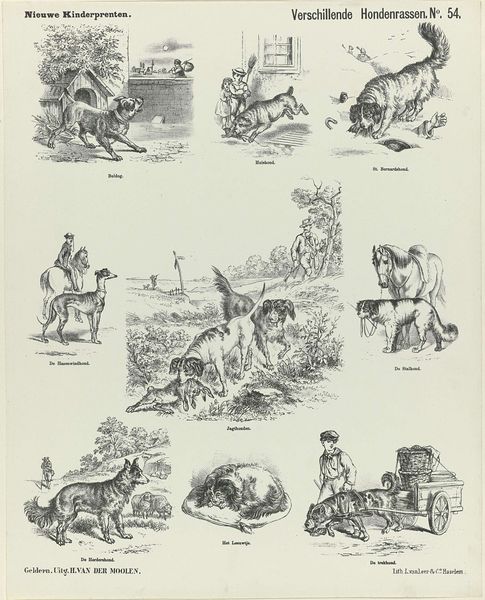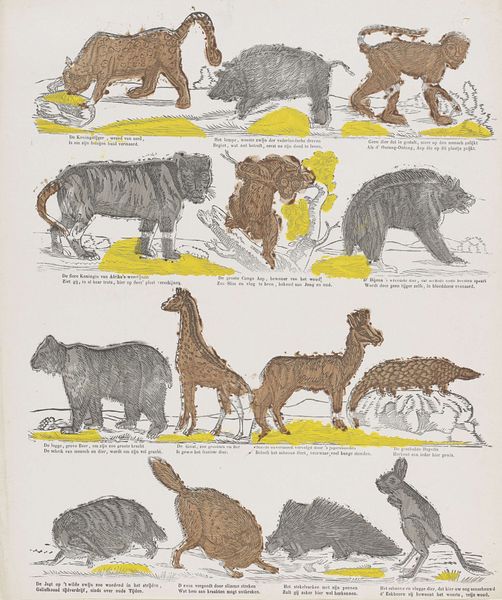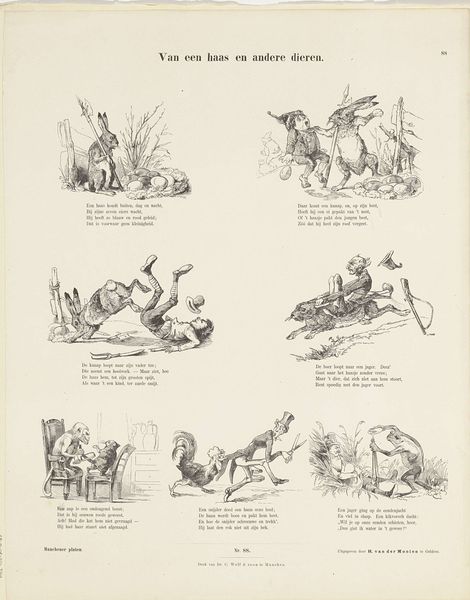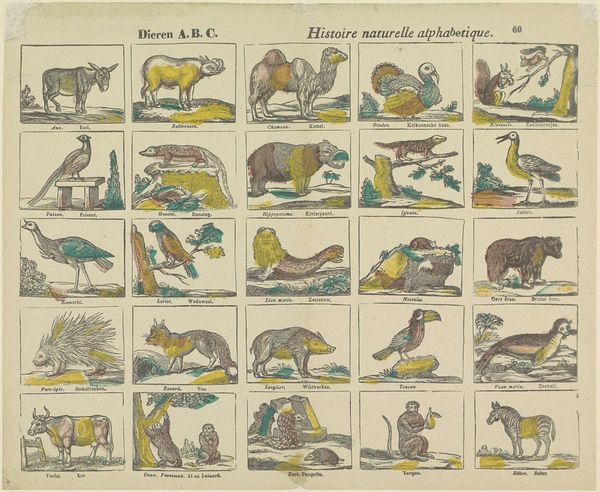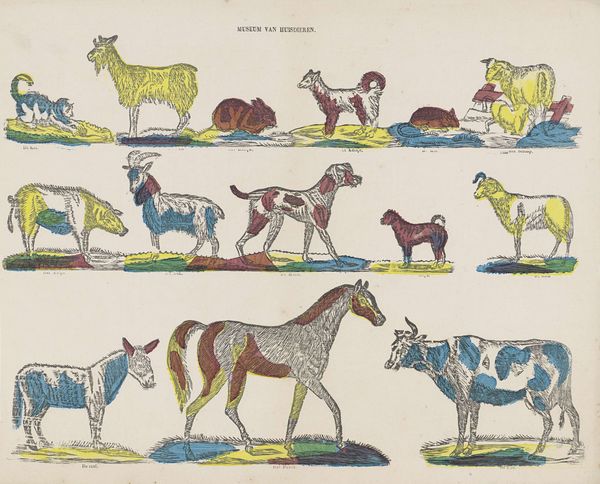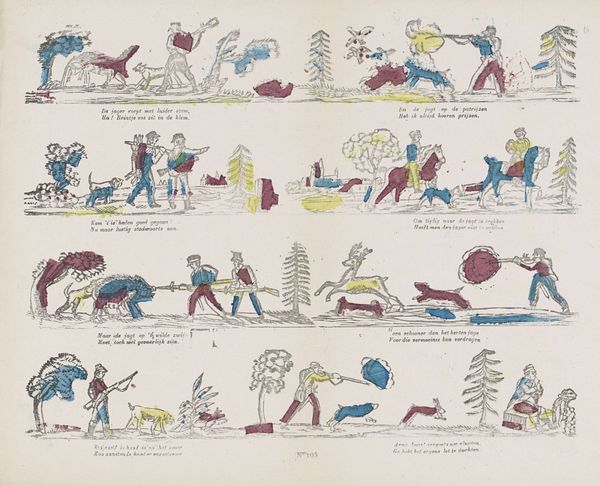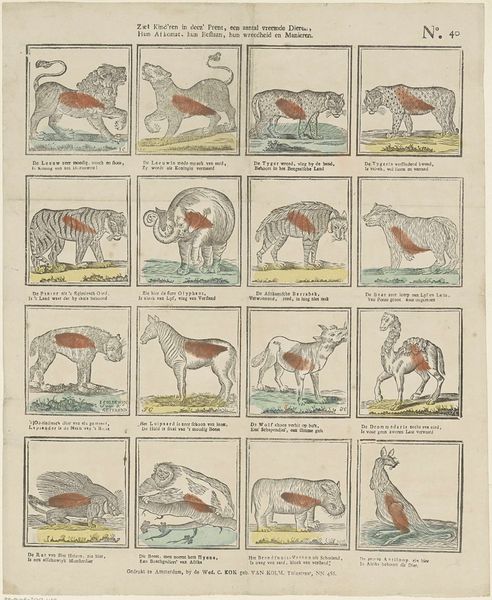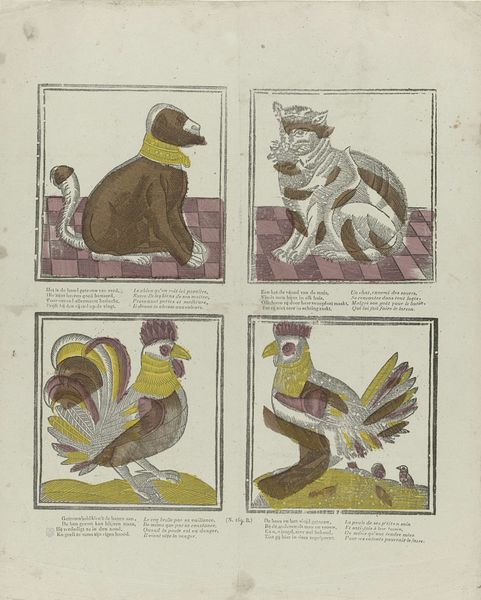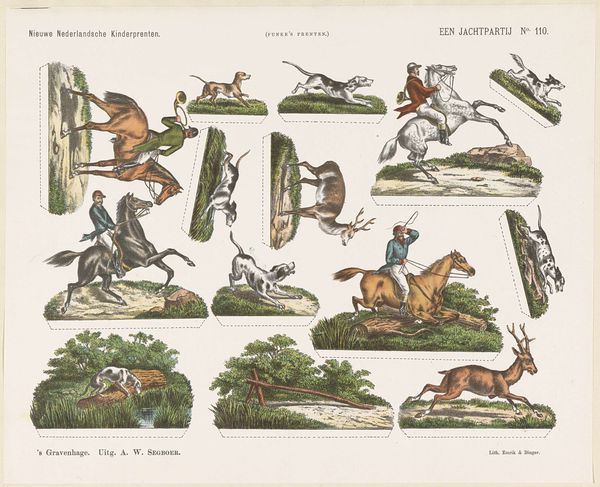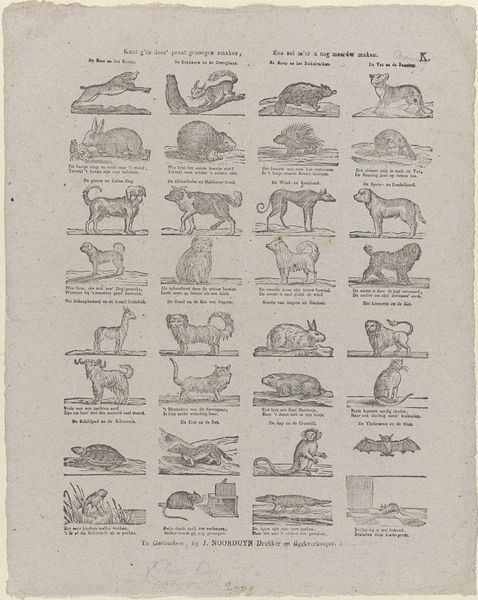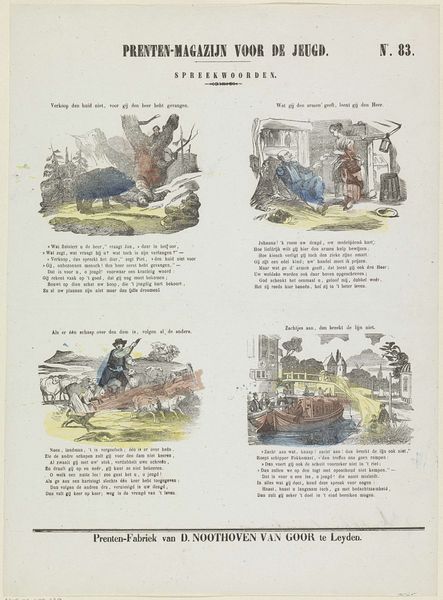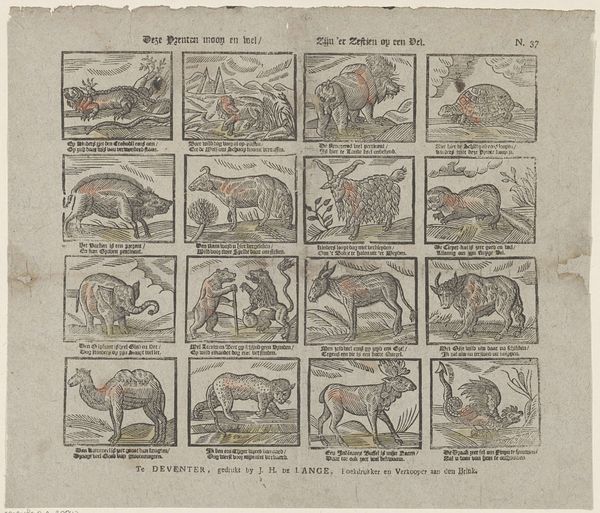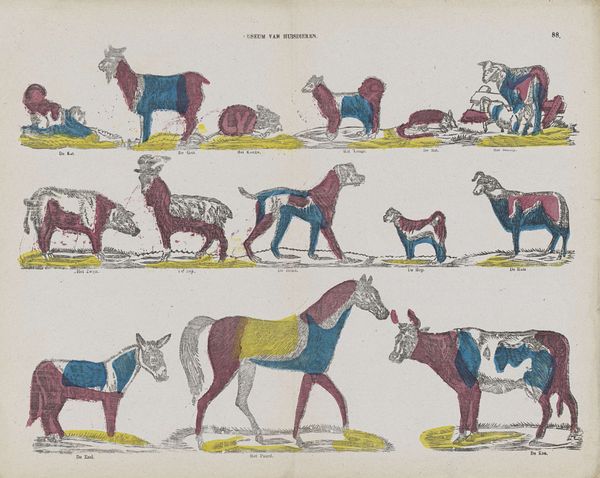
lithograph, print
#
comic strip sketch
#
animal
#
lithograph
# print
#
pen sketch
#
sketch book
#
personal sketchbook
#
sketchwork
#
pen-ink sketch
#
line
#
pen work
#
sketchbook drawing
#
genre-painting
#
storyboard and sketchbook work
#
sketchbook art
#
realism
Dimensions: height 399 mm, width 320 mm
Copyright: Rijks Museum: Open Domain
Editor: This is "Menagerie van verschillende dieren" from sometime between 1848 and 1881 by Lutkie & Cranenburg, held at the Rijksmuseum. It's a lithograph, so a print. It feels almost like a children's book illustration, but there's something unsettling about it. What catches your eye in terms of its artistic merit? Curator: The lithographic printmaking process itself is significant. Mass-produced imagery like this became increasingly available in the 19th century, influencing visual culture. The crude, almost cartoonish depiction of animals draws attention to the industrial means by which knowledge and representations of the natural world were disseminated. Who had access to these images, and how might it have shaped their understanding of exotic creatures? Editor: That's interesting. I hadn't thought about the implications of it being mass-produced. So you're suggesting the medium itself is the message here? Curator: Precisely. The subject matter, various animals, points towards consumption and spectacle. "Menagerie" evokes a sense of curated display, not unlike the burgeoning zoos and circuses of the era. What does it say about our relationship with the natural world when it's packaged and sold as entertainment? And how does that contrast to, say, academic or scientific illustrations? Editor: So, by examining the materials and the method of production, we gain insight into the social and cultural context in which the artwork was created and consumed. I'm now seeing the link between the art itself and the society around it in a completely new way. Curator: Indeed. Examining the means of production alongside the image reveals power dynamics and the commodification of knowledge, offering a much deeper understanding than aesthetic appreciation alone. It compels us to ask, "who benefited from these representations and at whose expense?"
Comments
No comments
Be the first to comment and join the conversation on the ultimate creative platform.
